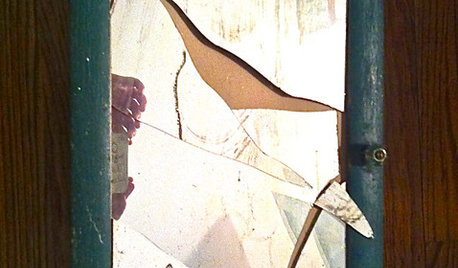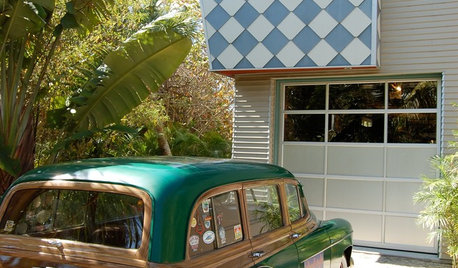Better luck this year?
jaymo49
14 years ago
Related Stories

PRODUCT PICKSGuest Picks: Good Luck in the New Year
20 cheerful symbols of luck represent good fortune in 2012
Full Story0

LIFEDo You Believe in Luck Around the House?
Broken mirrors, spilled salt, an unavoidable ladder — superstitions don't seem to affect this homeowner. Knock wood
Full Story
GARDENING FOR BUTTERFLIES3 Ways Native Plants Make Gardening So Much Better
You probably know about the lower maintenance. But native plants' other benefits go far beyond a little less watering and weeding
Full Story
MOST POPULAR12 Key Decorating Tips to Make Any Room Better
Get a great result even without an experienced touch by following these basic design guidelines
Full Story
You Said It: ‘The More Dents, the Better’ and More Houzz Quotables
Design advice, inspiration and observations that struck a chord this week
Full Story
BEFORE AND AFTERSSmall Kitchen Gets a Fresher Look and Better Function
A Minnesota family’s kitchen goes from dark and cramped to bright and warm, with good flow and lots of storage
Full Story
COMMUNITY15 Ways to Make Your Neighborhood Better
Does your community lack ... well, a sense of community? Here's how to strengthen that neighborly spirit
Full Story
MOVINGRelocating? Here’s How to Make the Big Move Better
Moving guide, Part 1: How to organize your stuff and your life for an easier household move
Full Story
HOME OFFICES7 Ways to Make Your Home Office Work Better for You
Have more energy, be more productive and feel better while working at home with these ideas based on science
Full Story
FEEL-GOOD HOMEIs Your Bedroom Designed for a Good Night’s Sleep?
Find out how the right nightstands, bedding, rugs, TV and storage can help you get more restful slumber
Full StorySponsored
More Discussions






rafed
giants_2007
Related Professionals
Leawood Landscape Architects & Landscape Designers · Montgomeryville Landscape Architects & Landscape Designers · Peabody Landscape Contractors · Stoughton Landscape Contractors · Bellefontaine Neighbors Landscape Contractors · Gurnee Landscape Contractors · Palos Verdes Estates Landscape Contractors · Setauket-East Setauket Landscape Contractors · Waipahu Landscape Contractors · West Coon Rapids Landscape Contractors · West Covina Landscape Contractors · West Haverstraw Landscape Contractors · Fort Mill Decks, Patios & Outdoor Enclosures · Kansas City Decks, Patios & Outdoor Enclosures · Statesville Decks, Patios & Outdoor Enclosuresbjs496
danab_z9_la
jaymo49Original Author
dieseler
tapla (mid-Michigan, USDA z5b-6a)
danab_z9_la
danab_z9_la
tapla (mid-Michigan, USDA z5b-6a)
danab_z9_la
jaymo49Original Author
danab_z9_la
satellitehead
danab_z9_la
satellitehead
danab_z9_la